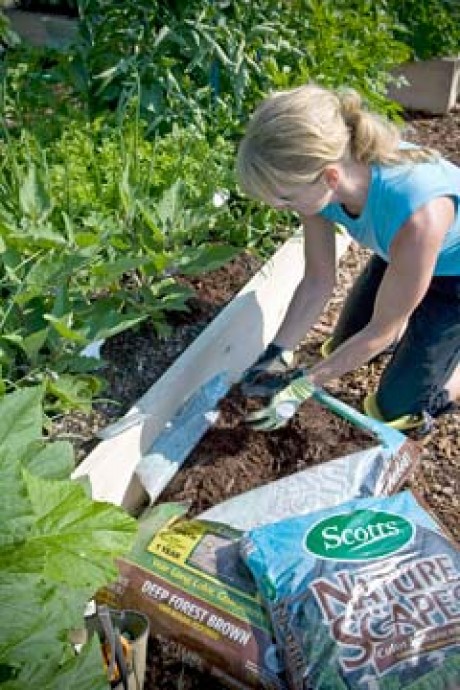10 Ways To Be Green In Your Yard

The National Gardening Association (NGA) finds that nine in 10 Americans believe it's important to maintain their landscapes in a way that benefits the environment.
To measure how "green" homeowners are in caring for their lawns and landscapes at home, NGA asked respondents with a yard or garden which environmentally friendly lawn, garden and landscape practices they follow. The result? Most homeowners follow only a sixth of the environmentally friendly lawn, garden and landscape practices recommended by the NGA.
While most homeowners answered that they water their lawn and plants only when needed and keep yards well maintained to add beauty, only about half say they follow pesticide and fertilizer labels carefully.
Similarly, fewer than half surveyed said they apply mulches; go to the trouble of choosing the right plants for their climate, sun/shade, soil and rainfall; or cut their lawns at the highest recommended mower setting.
The 10 Ways
Here are 10 ways you can be environmentally friendly when caring for your lawns and gardens:
- Feed regularly. Maintaining a healthy lawn involves regular feedings. A healthy lawn is able to absorb and use water more efficiently and recover from drought quickly once water becomes available.
- Water wisely. Pumping water requires power. Rely instead on rainfall for watering lawns and gardens as much as possible. Before watering, watch for signs of lack of water such as dry soil or wilting. For your lawn, the time between needed irrigation is up to 20 days for heavy, clay soils and about 5 days for light, sandy soils.
- Mow high. Set your mower to its highest appropriate setting. Longer grass blades promote deeper roots that help retain moisture. Mow St. Augustine and buffalo grass at three inches, one inch for Bermuda grass and two inches for centipede and Zoysia grass.
- Leave grass clippings on the lawn. Recycled grass clippings return organic matter and nutrients to the soil. It saves clean-up time and improves soil quality.
- Keep fertilizer on the lawn. Sweep fertilizer and grass clippings off driveways, sidewalks and curbs and back onto your lawn. Making this a habit protects rivers, lakes and streams while keeping nutrients where the belong—on the lawn.
- Choose the right plants. Pick easy-to-grow plants and lawn types that are well adapted or native to your region. Avoid plants with known pest problems.
- Be green in your yard. Use a push mower, which, unlike a gas or electric mower, consumes no fossil fuels and emits no greenhouse gases.
- Compost your food and yard waste. Doing so reduces the amount of garbage sent to landfills and reduces greenhouse gas emissions. For tips, visit the Environmental Protection Agency's GreenScapes Web site at www.epa.gov/greenscapes.
- Apply mulch to your yard and garden. Use mulch to help moderate soil temperature and retain moisture during dry weather, reducing the need for watering. Learn all about mulch, plus free sources of mulch, from the U.S. Department of Agriculture at www.nrcs.usda.gov/feature/backyard/mulching.html.
- Plan your landscape wisely. Choose plants that are low-maintenance and require less water and fewer pesticides.
-
Share this story:


